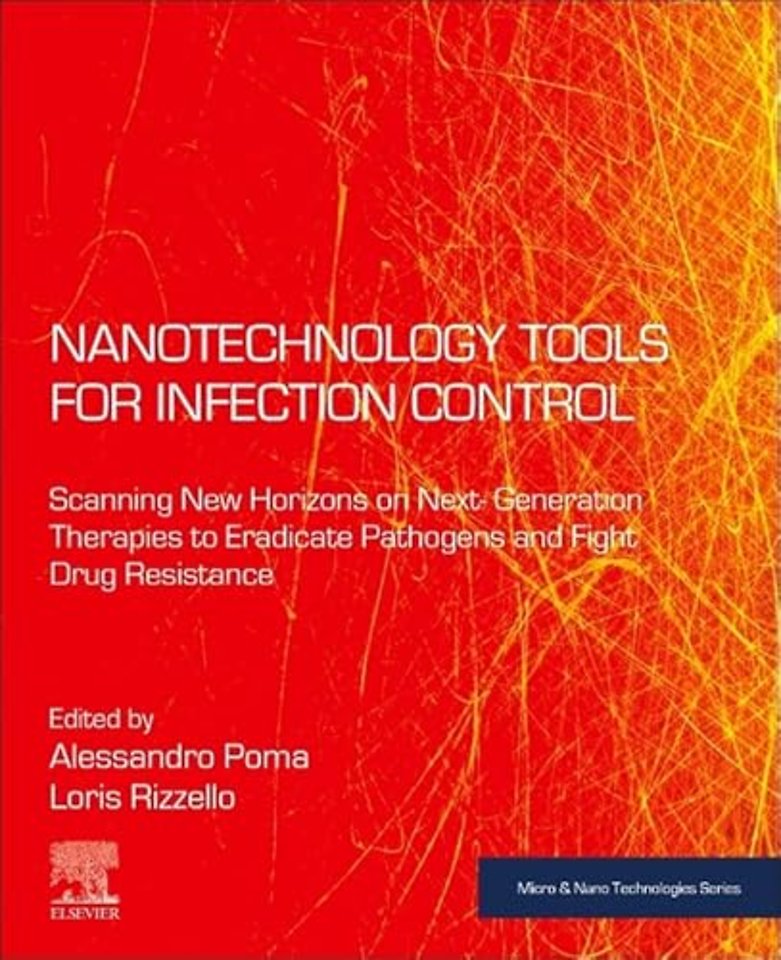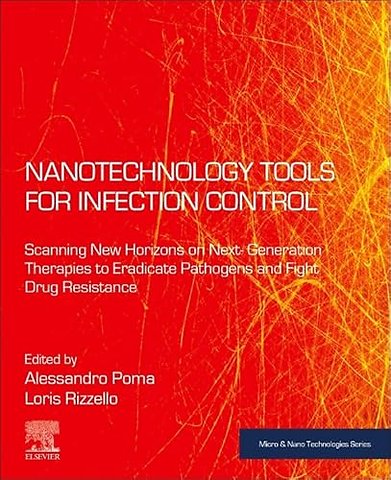Nanotechnology Tools for Infection Control
Scanning New Horizons on Next-Generation Therapies to Eradicate Pathogens and Fight Drug Resistance
Samenvatting
Nanotechnology Tools for Infections Control: Scanning New Horizons on Next-Generation Therapies to Eradicate Pathogens and Fight Drug Resistance provides an overview of recent strategies to build nanotechnology platforms, with a specific focus on biocompatible and biodegradable nanosystems. Particular attention is given to responsive nanoparticles, which are able to sense and respond to specific external stimuli (e.g., temperature, pH). The book includes details of the rationale behind the design of the raw materials, synthetic procedures and characterization techniques. It also introduces a new generation of nanomaterials, commonly named as ‘nanobots’, which are able to self-propel in response to external stimuli.
Subsequent sections of the book focus on the applications of nanosystems as an alternative approach to standard antibiotics. The chapters describe their pharmokinetic and dynamics within the body, their ability to cross biological barriers and how they distribute within different body compartments. In this respect, a dedicated section highlights the crucial role of the immune system, as well as of protein corona, in changing the nanoparticles retention within the body. Coverage is also given to describe how nanosystems access different cells and their intracellular trafficking.

